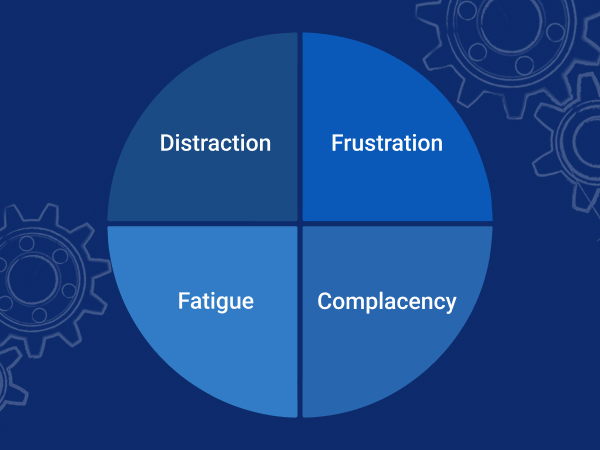
Managing Human Factors in Elevator Safety: Distraction, Frustration, Fatigue, and Complacency
Elevator Constructors work in environments where safety is priority number one. The presence of hazards, including falls, electrical exposure, and confined spaces are well known. Unfortunately, some of the most dangerous risks are human factors that affect how work gets done. Distraction, frustration, fatigue, and complacency are conditions that can creep into daily routines and directly impact decision-making, safety awareness, and performance on the job.
Reducing these threats requires both organizational awareness and personal accountability. NEIEP and OSHA recognize human factors as contributors to workplace incidents, particularly in high-risk trades like elevator construction. On an individual level, it’s only by exploring these factors that we can understand how they manifest and how employers and workers can minimize the risks.
Distraction
Distraction is often underestimated in its impact, but it’s one of the most immediate hazards for Elevator Constructors. A ringing phone or internal stressor can pull focus from the task at hand. If you’re working in a hoistway, wiring a control panel, or aligning rails, losing focus for just one moment can lead to critical mistakes. In the elevator industry, distraction is a safety risk that needs proactive management.
You can reduce distractions by:
- Using checklists to verify each step
- Establishing “no interruption zones” during high-risk activities
- Keeping tools and materials organized and within reach
- Practicing a “pause and reset” whenever interrupted
Elevator Constructors can prevent distraction by treating it with the same seriousness as physical hazards. Employers should reinforce this by promoting workplace cultures where interruptions are minimal and workers feel empowered to reset when necessary.
Frustration
Frustration develops when a task doesn’t go as planned. That could be a misaligned component, a breakdown, or a rushed deadline. The combination of technical precision and jobsite pressure can create stress. Frustration clouds judgement, increases irritability, and can push workers towards unsafe shortcuts.
Managing frustration requires:
- Taking a short break to reset focus
- Communicating challenges with coworkers
- Switching assignments to reduce stress buildup
- Acknowledging frustration early to control it
Rather than viewing frustration as weakness, Elevator Constructors can treat it as a signal. When addressed early, it becomes an opportunity to regroup and return with clarity. Supportive environments where communication is encouraged help ensure frustration doesn’t lead to mistakes.
Fatigue
Fatigue reduces alertness, reaction times, and judgement. According to OSHA, workers on 12-hour shifts face a 37% increase in injury risk, while night shifts raise injury rates by nearly 30%. In the elevator industry, where long days and emergency callouts are common, fatigue can quietly undermine safety.
You can manage fatigue by:
- Ensuring adequate rest between shifts
- Rotating demanding tasks to avoid overload
- Monitoring for signs of fatigue
- Speaking up if too tired to work safely
Short breaks, hydration, and honest self-assessment help, and, where possible, employers should also schedule work to minimize the risk of fatigue.
Complacency
Unlike frustration and fatigue, complacency develops slowly, often in experienced workers. Tasks like adjusting door equipment or checking safety circuits may feel routine. This routine can create a false sense of security, leading workers to skip steps or overlook hazards.
Preventing complacency requires:
- Treating every task as if it’s the first time
- Double-checking steps, even if familiar
- Using peer verification for critical tasks
Complacency feels harmless, but its impact can be severe. Even seasoned professionals benefit from treating each jobsite as unique, with hazards that deserve full attention.
The Importance of Mitigating Human Factors in the Elevator Industry
Distraction, frustration, fatigue, and complacency are everyday factors that directly impact the safety of workers and anyone who uses the elevators they work on. Each represents a hurdle, but each can be controlled with awareness, preparation, and active steps. Both OSHA and NEIEP recognize that safety comes not only from equipment and procedures, but also from the mindset and habits of the people performing the work.
By treating distraction, frustration, fatigue, and complacency with the same seriousness as physical hazards, Elevator Constructors can build resilience into their routines. Maintaining focus, managing frustration, mitigating fatigue, and avoiding complacency are practices that make every jobsite safer.
